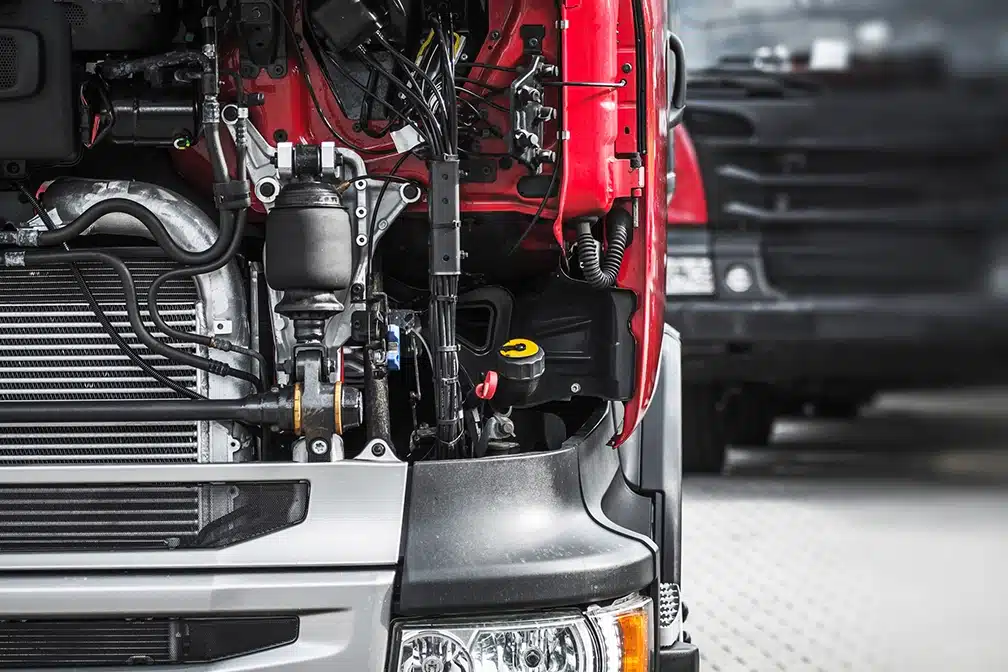In a move that has sent shockwaves throughout the trucking industry, the National Owner Operators Association (NOOA) recently declared a nationwide truckers' shutdown. The objective of this
More
May 19, 2024 4:52 pm

Introduction
In a development that has long been awaited by the trucking industry, there has been a notable decline in heavy-duty parts and labor costs, signaling a turning point in Truck Maintenance expenses. After a prolonged period of increasing costs, the commercial trucking community is finally witnessing a positive shift in maintenance costs. In this comprehensive article, we will delve deeper into the details of the latest report from the American Trucking Associations’ Technology & Maintenance Council (TMC) and Decisiv. We will explore the factors behind this decline and analyze the implications for truck drivers, fleet owners, and the broader industry.
The second quarter of 2023 brought significant relief to the trucking sector as the combined parts and labor costs for the top 25 Vehicle Maintenance Reporting Standard (VMRS) codes decreased by 1.3% when compared to the preceding quarter. This decline marks a notable departure from the prolonged period of cost increases that have been a concern for trucking professionals and fleet owners.
One of the most striking revelations from the report is the decrease in labor costs, a phenomenon that has been unseen for an entire year in the realm of Truck Maintenance. Additionally, parts costs experienced a consecutive decline for the second quarter in a row. On a year-over-year basis, the combined costs for parts and labor in the second quarter of 2023 only rose by 5.57%. This stands in stark contrast to the steep 15% increase in costs observed in 2022. Undoubtedly, this decrease in service costs is a breath of fresh air for the trucking industry and its approach to Truck Maintenance.
Several key factors have played pivotal roles in bringing about this welcome decrease in heavy-duty parts and labor costs related to Truck Maintenance:
The Decisiv/TMC North American Service Event Benchmark Report provides valuable insights into cost breakdown by VMRS code categories, shedding light on different aspects of Truck Maintenance. Among these, engines and related systems accounted for the largest percentage of all costs in the second quarter. Powerplant expenses alone constituted 35.9% of the costs, followed by exhaust (12.9%), cooling (6.1%), and fuel systems (5.3%). These categories together accounted for a substantial 60.2% of costs during the quarter, showcasing the importance of effective Truck Maintenance strategies in these areas.
Understanding these cost breakdowns is crucial for truck drivers and fleet owners as it enables them to pinpoint areas where cost reductions may be feasible within the scope of Truck Maintenance. This information empowers them to make informed decisions about maintenance strategies and budget allocation, ultimately improving the efficiency of operations.
As the trucking industry embarks on a journey through this period of decreasing maintenance expenses, there is growing optimism that service and repair costs will eventually stabilize within the realm of Truck Maintenance. It is anticipated that costs will settle into a more predictable cycle, aligning with the standards established in the industry’s past. This newfound stability will be a welcome change, offering assurance to truck drivers and fleet owners alike as they manage the complexities of Truck Maintenance.
Moreover, the industry can leverage this period of cost reduction to invest in proactive Truck Maintenance strategies. By focusing on preventive measures and adopting technology-driven solutions, such as predictive maintenance and data analytics, trucking companies can further optimize their operations and reduce long-term maintenance costs. This forward-thinking approach enhances the overall efficiency of Truck Maintenance, reducing downtime and enhancing the reliability of truck fleets.
In conclusion, the news of decreasing heavy-duty parts and labor costs related to Truck Maintenance in the second quarter of 2023 brings a sense of relief and optimism to the trucking industry. After months of enduring escalating expenses, the industry is finally experiencing a positive shift in its approach to Truck Maintenance. Economic and operational factors have played a significant role in reducing these costs, and the trend is expected to continue, further enhancing the efficiency of operations.
As the trucking community adapts to these changes, it is evident that the road ahead is becoming smoother, promising a more stable and prosperous future for all involved in the world of commercial trucking and Truck Maintenance. The industry can now look forward to navigating its path with greater confidence, armed with the knowledge that maintenance costs are moving in the right direction, ultimately optimizing the efficiency of Truck Maintenance and bolstering the overall health of the industry. By embracing innovative maintenance practices and staying attuned to industry trends, truck drivers and fleet owners can continue to drive efficiencies and enhance their competitiveness in the evolving landscape of the trucking world.
In a move that has sent shockwaves throughout the trucking industry, the National Owner Operators Association (NOOA) recently declared a nationwide truckers' shutdown. The objective of this
MoreThe Surface Transportation Assistance Act (STAA) was a significant piece of legislation enacted in the United States in 1982 that profoundly impacted the country's transportation infrastructure and
MoreOn August 16, according to FreightWave publication, monitored by Truck Driver News reported on August 19, Ferdinand, an Indiana-based A/T Transportation and its brokerage, Automated Logistics, were
MoreIn an era where logistics and transportation are pivotal to the global economy, the trucking industry emerges as a vital
MoreTruck Driver News – Texas Truck Driver Jobs Texas offers a thriving economy and strategic location for trucking services. With
MoreThe Federal Motor Carrier Safety Administration (FMCSA) is on a mission to ensure fairness in the trucking industry, especially when
MoreTravelCenters of America (TA) Unveiling of Two New Centers TravelCenters of America (TA) is making significant strides in enhancing the
MoreWhen starting a driving career as an OTR driver, there are several essential things to know that can contribute to
More